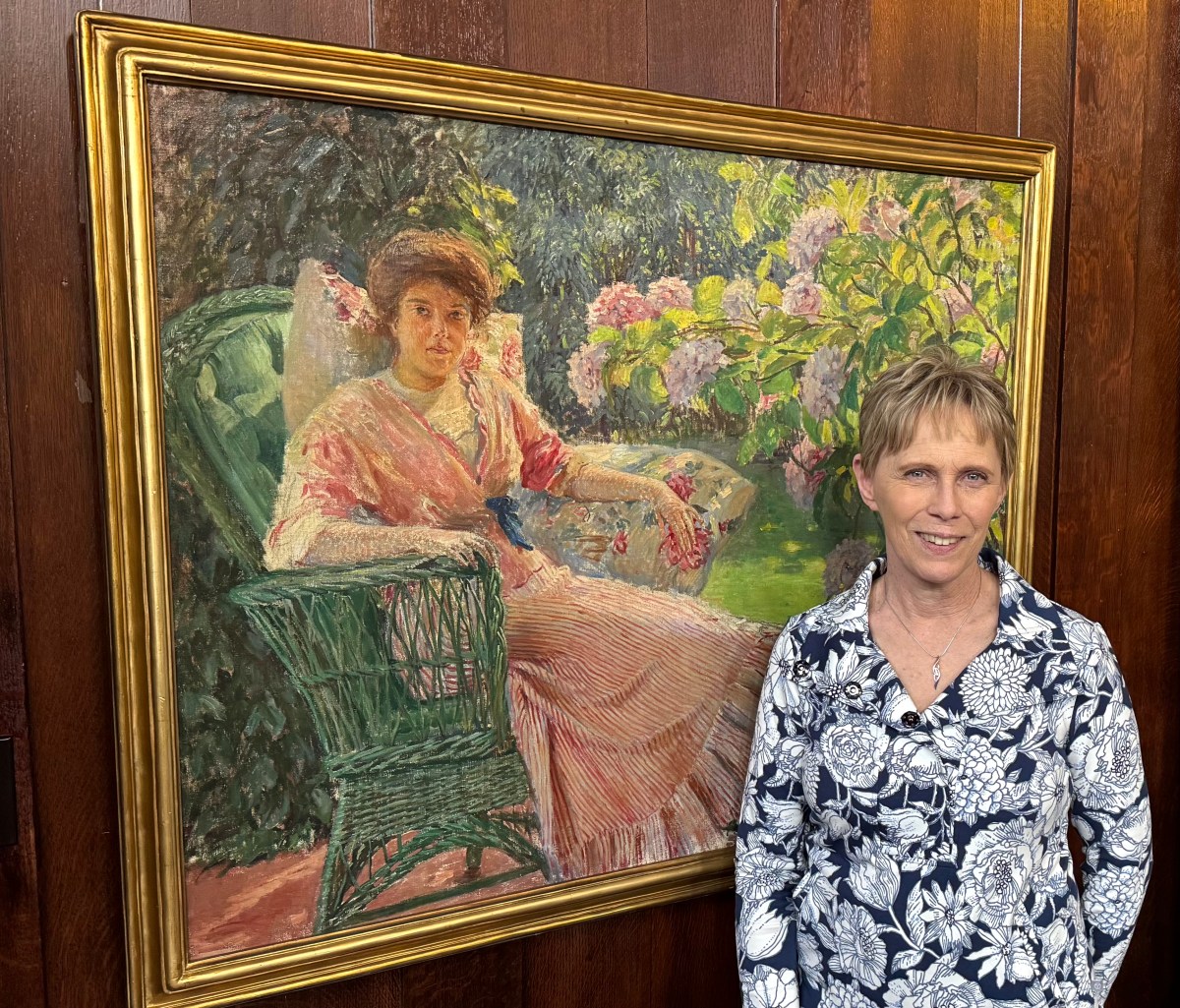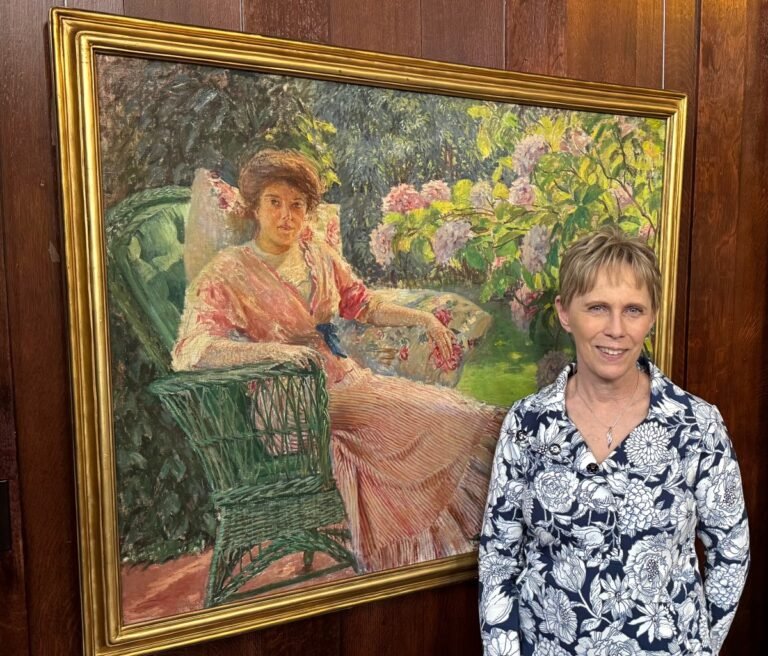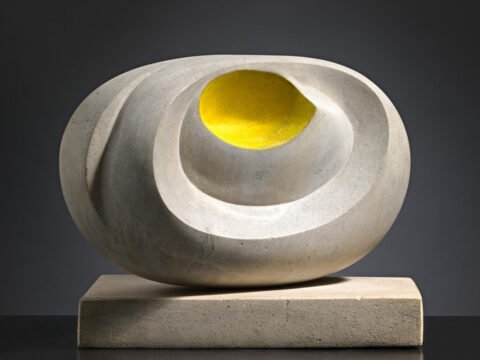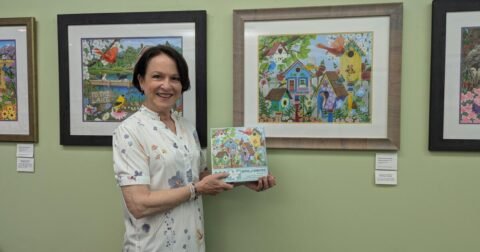
Janice Wiley, director of the Church Catalogue Raisonne, celebrates the exhibition’s opening at the North Shore Historical Museum.
GSM Communications
Long Island impressionist artist F. Edwin Church is being celebrated at the North Shore Historical Museum in Glen Cove, exactly 50 years after a retrospective study of his work was displayed in Locust Valley.
“It was important that we show some of his most iconic pieces,” said Janice Wiley, director of the F. Edwin Church Catalogue Raisonne Project. The project, which launched online in 2018, aims to create a database of Church’s inventory to explore his personal and artistic works and increase public awareness.
Wiley, whose late husband was Church’s grandson, said she came to own much of his work after her husband died in 2001. Although she currently lives in Virginia, she often travels to Long Island to discuss exhibiting Church’s work.
Church, who lived in Locust Valley for 40 years, was named after—but not related to—the Hudson River Valley artist Frederic Edwin Church. In 1975, when Church was 98, a display of his work was showcased in Locust Valley. Wiley said that a few years ago, she began reaching out to local museums and societies to celebrate the anniversary.
Wiley studied art in school and worked in an art supply and conservation framing store for many years before she started the project. Despite her love of art and work on artwork of her own, she’d never curated an exhibit before.
She said that, with help from the museum, it was a “mutual curation” of the exhibit, which showcases 46 of Church’s works.
“It’s another window into the American impressionist movement, which was hugely popular. Church did some extraordinary things in that time,” she said.
Wiley said Church depicted a variety of things, but one of her personal favorites is a portrait titled “Girl in White.” She said the subject has a “wonderful expression” that looks like she’s “ready to turn and talk to you off the canvas.”
Wiley also highlighted his paintings depicting tropical fish and coral reefs in the Caribbean from 1927, when he accompanied naturalist William Beebe on dives in the waters. She said the paintings shocked audiences in the 1920s, who had never seen color photographs of underwater landscapes.
“When audiences went to the exhibit to see these paintings, it was quite astonishing to them to see this world of color under the ocean,” Wiley said.
She said some of the works haven’t been publicly exhibited in over 100 years. Wiley said that while the exhibit does showcase some of his most popular works, it set out to highlight different aspects of his work, including early watercolors up until his final paintings.
“Being a retrospective, it’s meant to encompass, really, his entire career,” she said.
Wiley said she is planning another exhibition of his work that will appear on Long Island soon and will continue the catalogue project as well.
The North Shore History Museum is open Friday through Sunday from 12:00 p.m. to 4:00 p.m. For more information on the exhibition, visit nshmgc.org. It will be on view through Aug. 18.





